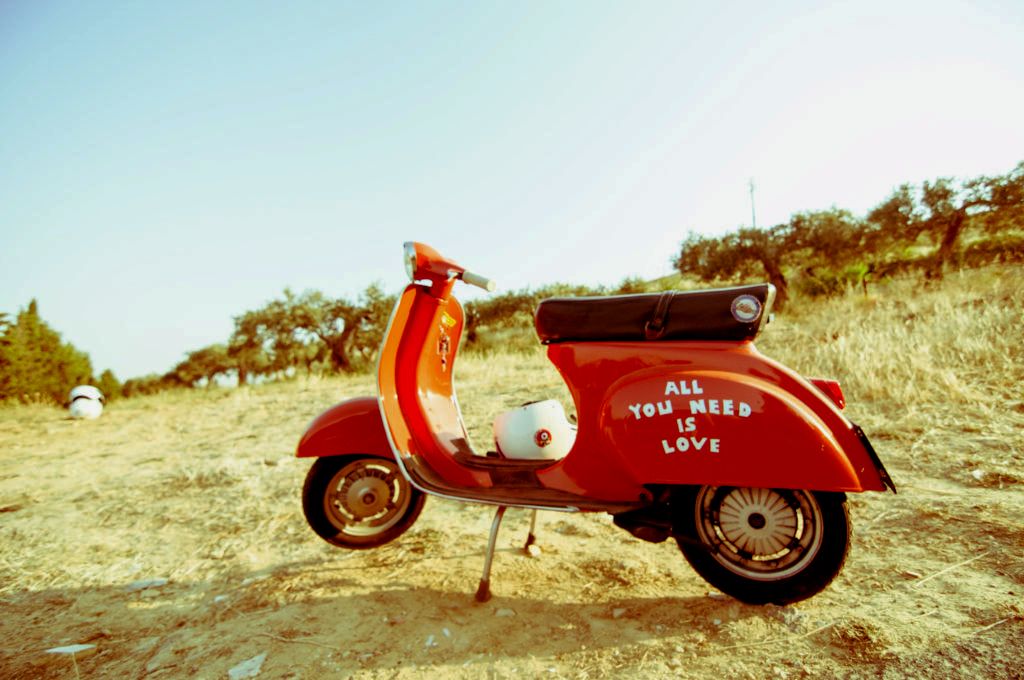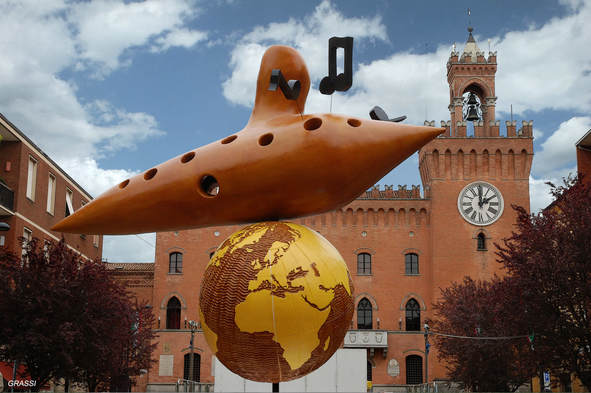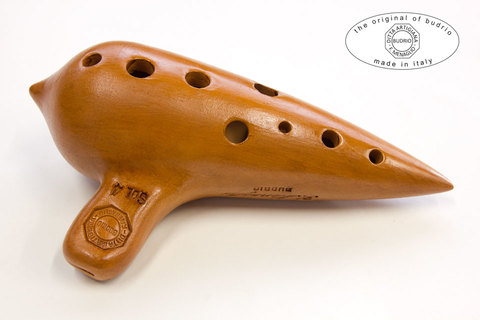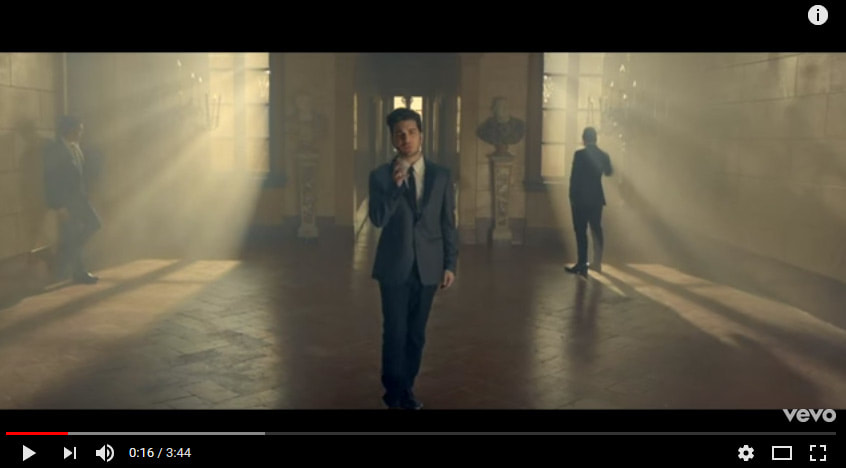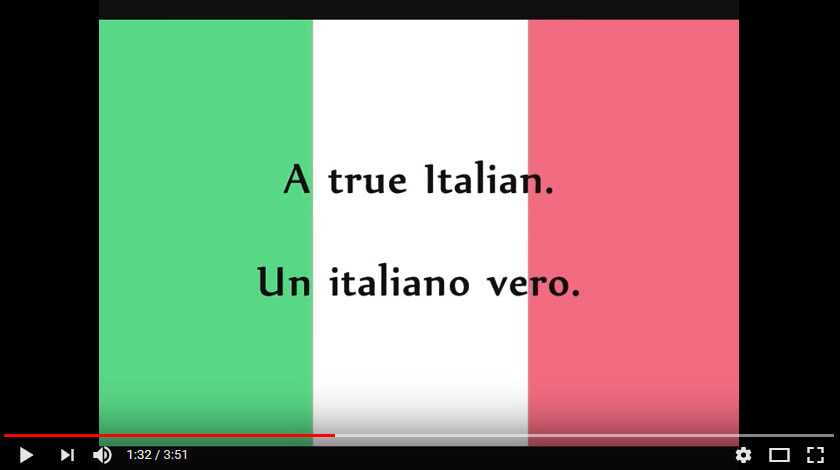Locked-Down for the Coronavirus, Italians Make Music and Sing their Camaraderie from Balconies3/14/2020 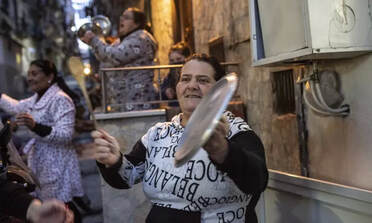 Perhaps it's a cultural thing. At the end of long days, most Italians stroll down to the main piazzi in towns and villages to mingle with their neighbors and families in the evening ritual of passeggiata. When meeting, embraces and kisses on cheeks are exchanged. Even while ignoring stop lights and signs, somehow Italians weave their way past the crush of neighboring vehicles, obeying an unspoken rule of letting each other go ahead without touching vehicles. It's a magical dance--a balance of self-confidence, ego, trust and respect. This is what astounds me about Italians. Their acceptance of time, love, tragedy, happiness, sadness, la famiglia and things outside their control. They will protest in hopes of change when pushed too far, but they also accept fate and try to do their best in bad situations. Floods, earthquakes, wars, financial crises, extreme heat... they make do with what they have and move on. And for now, their entire country is on lock-down. They accept having to stay at home--only heaven knows for how long. As a show of spirit and solidarity during the novel coronavirus crisis, Italians have turned to making music and song in their neighborhoods. They are serenading each other not on the piazza, but from their balconies and windows... Some neighborhoods sing Il Canto degli Italiani, their national anthem, while others sing Volare or Italian pop songs from the sixties. In the south, the tarantella or pizzica music is played with an accordions being played from neighboring balconies and the temp being kept by women beating the tamborello (frame drum with cymbols) or simply banging pot lids together or clapping to make some noise. One Italian expression says, "Fosse non possiamo avere tutto, ma noi insieme siamo tutto." (Perhaps we cannot have everything, but together we are everything.) I hope we Americans can take on this philosophy as we get deeper into our own cornonavirus crisis. Here in Bucks County, we just got the word that our entire county is on lock down. For now, Lisa, Lucas and I are safe, we have a well packed pantry, a month's supply of toilet paper and lots of recipes to try and streaming films to watch. Lisa's company ordered everyone to work from home a few days ago and Lucas is home due to a state wide school closure. When I get a chance, I'll sit on my front porch with my mandolin, Irish whistle or banjo and make some music... Stay safe and healthy, amici miei. --Jerry Finzi
The ocarina belongs to a very old family of instruments, believed to date back over 12,000 years, with varied versions made of bone, clay, wood and other materials. Many cultures have used them for song and dance. Variations have come from China, Japan, the Americas and they came to Europe via the trade routes of Eurasia. 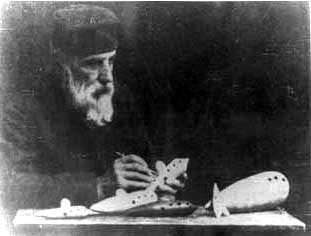 Giuseppe Donati Giuseppe Donati The modern Ocarina used throughout the world today was invented in Budrio, Italy, during the mid-nineteenth century by Giuseppe Donati. Its shape recalls the elongated ovoid profile of a goose (oca in Italian) without the head: the name is derived from ucarina, diminutive of oca in Bolognese dialect.  Donati invented the modern version of the ocarina in 1853 at 17 years old. Donati built a variety of large and small ocarinas tuned to each other, making it possible to place in concert with each other. Donati had made five ocarinas of different sizes, each having holes for all ten fingers, which ranged from bass and treble, an extension of notes tuned to the piano. With the help of other musicians, he assembled the "Concert of Ocarinas", each evening performing around town playing in taverns and private houses. The haunting sound of a vintage, bass ocarina is played in this video. The town of Budrio in the province of Bologna hosts the International Ocarina Festival each year in early spring. It's an event dedicated to the sound and atmosphere created by the ocarina, with the participation of guest musicians and makers from all over the world. The Festival is organized by the municipal district of Budrio with concerts, musical entertainment on the streets, exhibits, folk dancing and many other activities. This video shows the possibilities of using the ocarina for complex, classical musical performances, with a full range of octaves available for each musician.
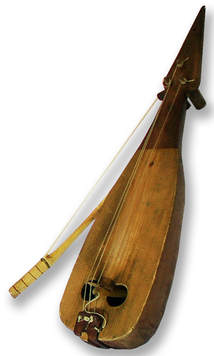 The Calabrian Lira (lyre) is a bowed string instrument with three strings. Like most bowed lyres and psalterys, it is played upright, usually supported on the knee, held with the left hand touching the strings with the nails laterally while the right hand moves the bow. Traditional songs of the Lira include accompaniment songs (e.g. serenades and songs of anger) and songs suitable for dancing (tarantellas). These songs and tunes are passed on from older players to the young. In recent years there has been a resurgence of Italian folk music from many regions of Italy, with newer musical traditional folkloric music groups and performers. There has also been more and more craftsmen in Calabria building these instruments. 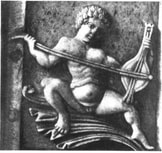 The Calabrian Lira is closely related to the bowed Lira of the Byzantine Empire, first noted by a 9th century Persian geographer and spreading to eastern Europe in the 11th and 12th centuries. The video below visits a Lira maker in his workshop... Mi Votu E Mi Rivotu (I Turn and Turn)
performed by Manunura This is one of the most beautiful love songs of Sicilian folk music. Famously known after the rendition by Sicilian singer Rosa Balistreri, she claimed to have heard this song sing for the first time inside the prison of Palermo, and has attributed to a prisoner the composition. In reality the lyrics of this song is very old and is present in many collections of Sicilian songs. It appeared in the collection that Lionardo Vigo Calanna, Marquis of Gallodoro, published in 1870 under the title "Raccolta Amplissima di Canti Siciliani", produced after a 20-year-long work of research and collection. English lyrics: I turn and turn again sighing I spend whole nights awake I admire your beauty and see the whole night pass until dawn Because of you now I no longer sleep My aching heart has no more peace Do you know when I'll leave you? When my life ends and I'll die O dove, walking along the seashore, stop that I must ask you a couple words stop so I can take a plume off your wings to write letters to my love. I write you letters, two, three But never a reply from you I receive Have you not paper to write or you cannot write? I turn and turn again sighing I spend whole nights without sleeping Back in 1983, Toto Cutugno recorded what was to become an incredibly popular, realistic view of L'Italiano. This is a somber, raw pronouncement of what a "real" Italian is. The song speaks of the vices, virtues and stereotypes of la Bel Paese, which, for example, is accused of excessive Americanism, a crisis of religion, a sexual casualness ( i.e., the line, "more and more women who are less nuns"), but still a country worthy of being proud of. The lyrics lace together religion, football, al dente pasta, espresso, socks, Italian artists, partisans as presidents and God. It's worthy to be thought of as a National Anthem for modern Italians. Click the video above to see an inspiring visual tour of what the Italian spirit is made of, or the Gypsy Queens video below for a very sexy rendition... --Jerry Finzi 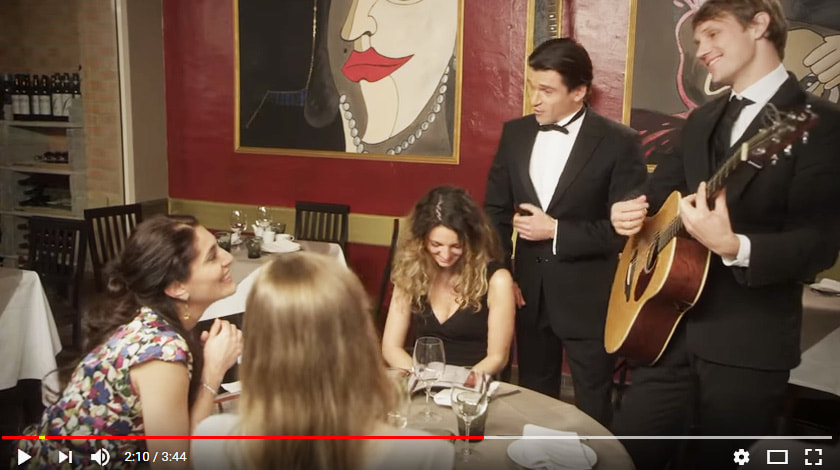 The Gypsy Queens version of L'Italiano by Toto Cutugno Click the photo above to watch the video Click the Photo Above to Play the Video The trio of young Italian tenors Il Volo (the Flight), made up of Piero Barone, Ignazio Boschetto and Gianluca Ginoble, were originally three independent participants in the Eurovision talent contest. The singers, at that time fifteen, were presented as soloists. Il Volo was born in May of the same year when the producers decided to have the trio record the song "O Sole Mio" together. Their first album was recorded in London, Los Angeles and Rome with producer Humberto Gatica and included a mix of standard, classic Italian songs and songs written by contemporary authors such as Diane Warren. The Il Volo CD/DVD Takes Flight: Live from the Detroit Opera House came out in 2012.
|
Categories
All
Archives
July 2023
|


